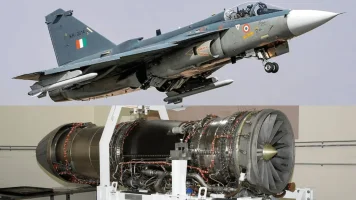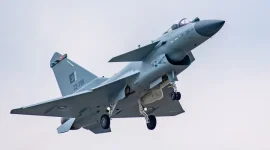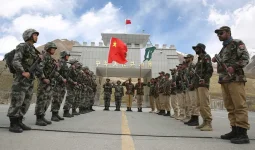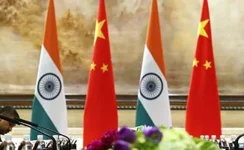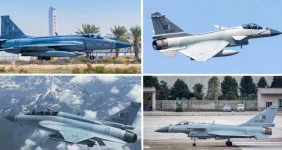India's rapidly growing defence export sector has prompted international discussion, highlighted by recent comments from Keji Mao, a Research Associate at Beijing's Pangoal Institution. Mao questioned whether India is positioning itself as a new global "Arsenal of Democracy," following India's announcement of record defence exports for the 2024-25 financial year.
Indian defence materials, including ammunition, weapons, components, and complete systems, were reportedly exported to approximately 80 countries, with the United States, Israel, and Germany being the most significant importers.
Official figures indicate that India's defence exports reached an unprecedented ₹23,622 crore (around US$2.8 billion) in the fiscal year 2024-25. This represents a 12.04% increase compared to the previous year's total of ₹21,083 crore. This growth trajectory has accelerated since 2014 when the Indian government encouraged greater private sector involvement in defence production.
Private companies contributed ₹15,233 crore to the 2024-25 export value, while Defence Public Sector Undertakings (DPSUs) accounted for ₹8,389 crore, showing a notable 42.85% increase in their export contributions. Furthermore, the number of export authorisations granted rose by 16.92% to 1,762, suggesting continued export potential.
The term "Arsenal of Democracy" was historically used to describe the United States during World War II, signifying its role in supplying vital military equipment to Allied nations fighting against authoritarian powers. By applying this phrase to India, Mao points to the nation's status as both a democracy and an increasingly capable defence manufacturer.
The fact that three major destinations for Indian defence exports – the US, Israel, and Germany – are democratic nations lends weight to this comparison. However, this perspective is also viewed alongside India's established foreign policy positions and internal considerations.
India's export catalogue now includes a diverse array of defence products. These range from basic arms and ammunition to more sophisticated platforms such as the Pinaka multi-barrel rocket launchers, BrahMos supersonic cruise missiles, and Akash air defence systems.
The United States has become a significant importer of Indian-produced materials, alloys, steel, subsystems, and components. Israel, a consistent defence collaborator, imports substantial finished weapon systems, while Germany primarily sources electronics and software, especially for radar and avionics.
This export expansion aligns with India's 2018 Defence Production Policy, which set a target of US$5 billion in annual defence exports by 2025. Current trends suggest India is progressing towards this goal, with projections estimating exports could reach ₹50,000 crore (approximately US$6 billion) by 2029.
This rise in exports occurs as India actively works to increase self-reliance in defence procurement ('Aatmanirbhar Bharat' initiative). While India remains one of the world's largest arms importers (accounting for 9.8% of global imports according to recent SIPRI data), domestic manufacturing now reportedly meets 70-75% of the country's defence requirements.
Government initiatives like 'Make in India' have spurred domestic production, involving private firms like Bharat Forge and Tata Advanced Systems Limited, which manufacture systems such as the Advanced Towed Artillery Gun System (ATAGS) and Wheeled Armoured Platforms (WhAP) for both Indian forces and potential export.
However, applying the "Arsenal of Democracy" label to India is not without complexities. India maintains a policy of strategic autonomy, often prioritising national interests and maintaining relationships across different political systems. For instance, reports indicated Myanmar was a major recipient of Indian arms between 2018 and 2022.
Furthermore, India's neutral stance on certain global conflicts, such as its decision not to condemn Russia's invasion of Ukraine and its continued significant purchases of Russian oil, illustrate a foreign policy approach that complicates interpretations linking its defence exports solely to the support of democratic nations. These factors contribute to a nuanced picture of India's role in the international defence market.


